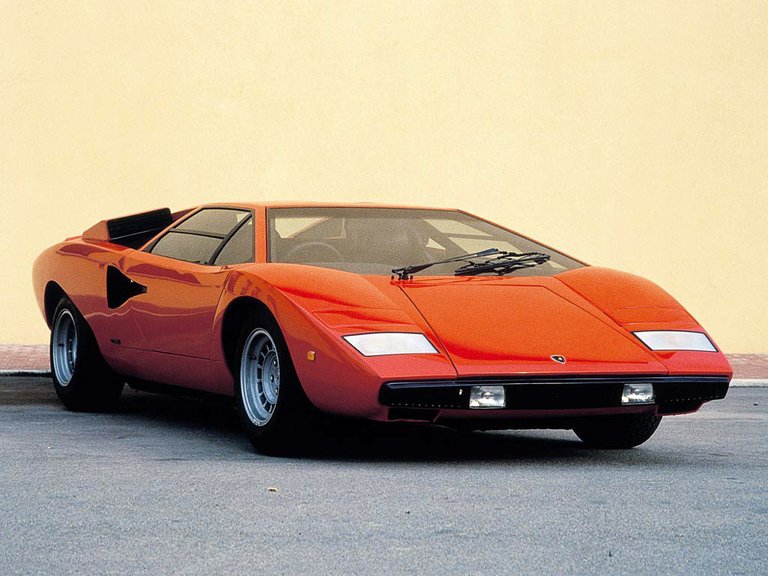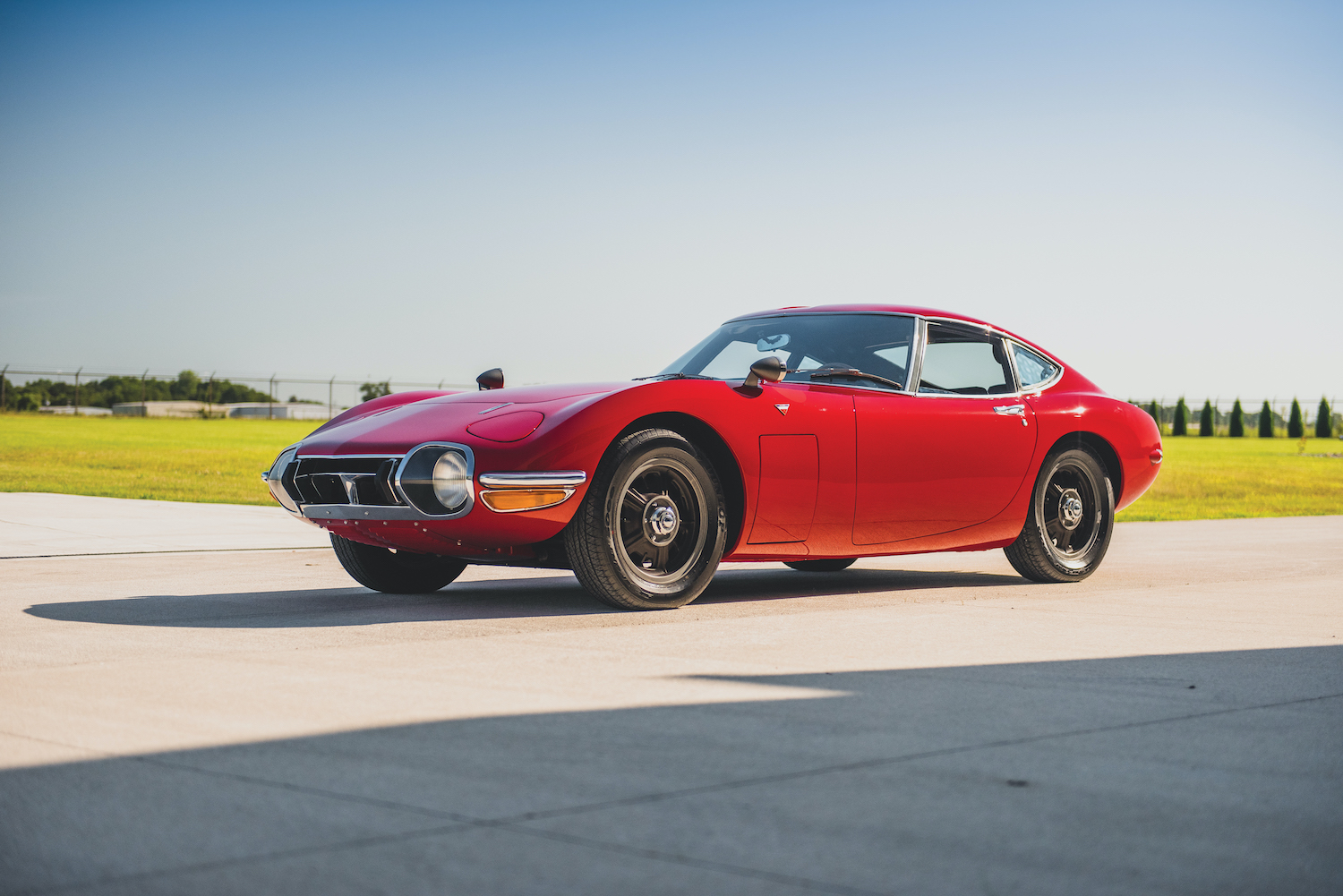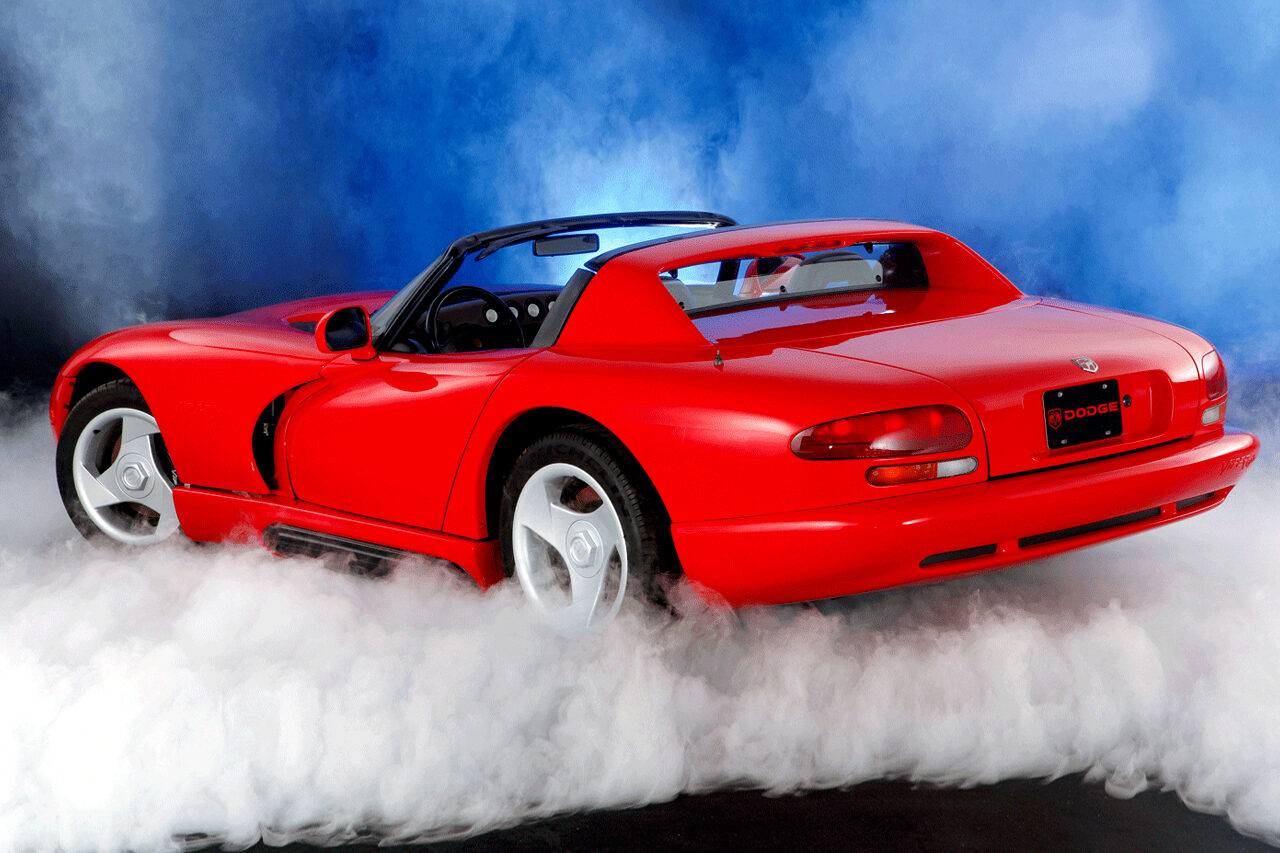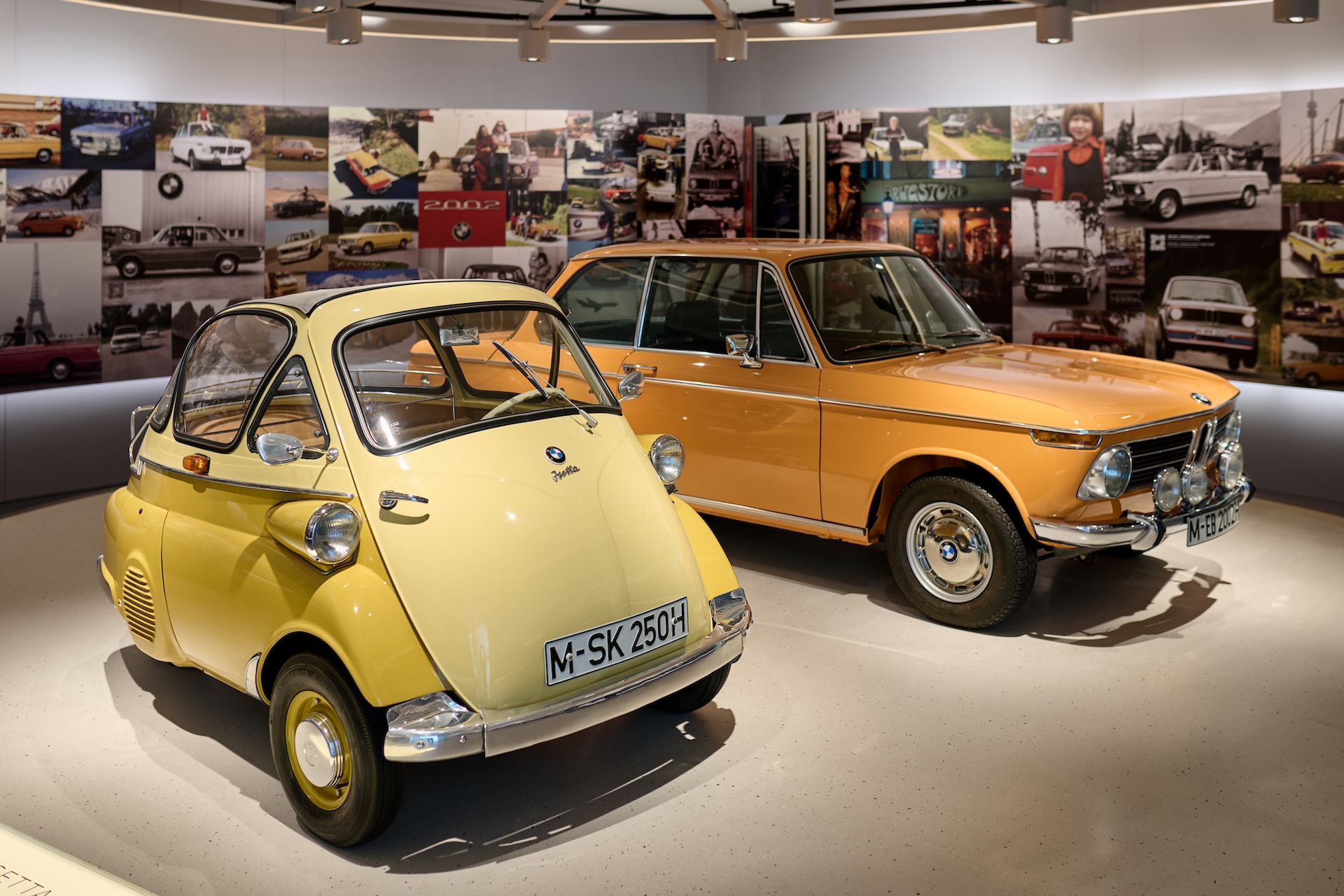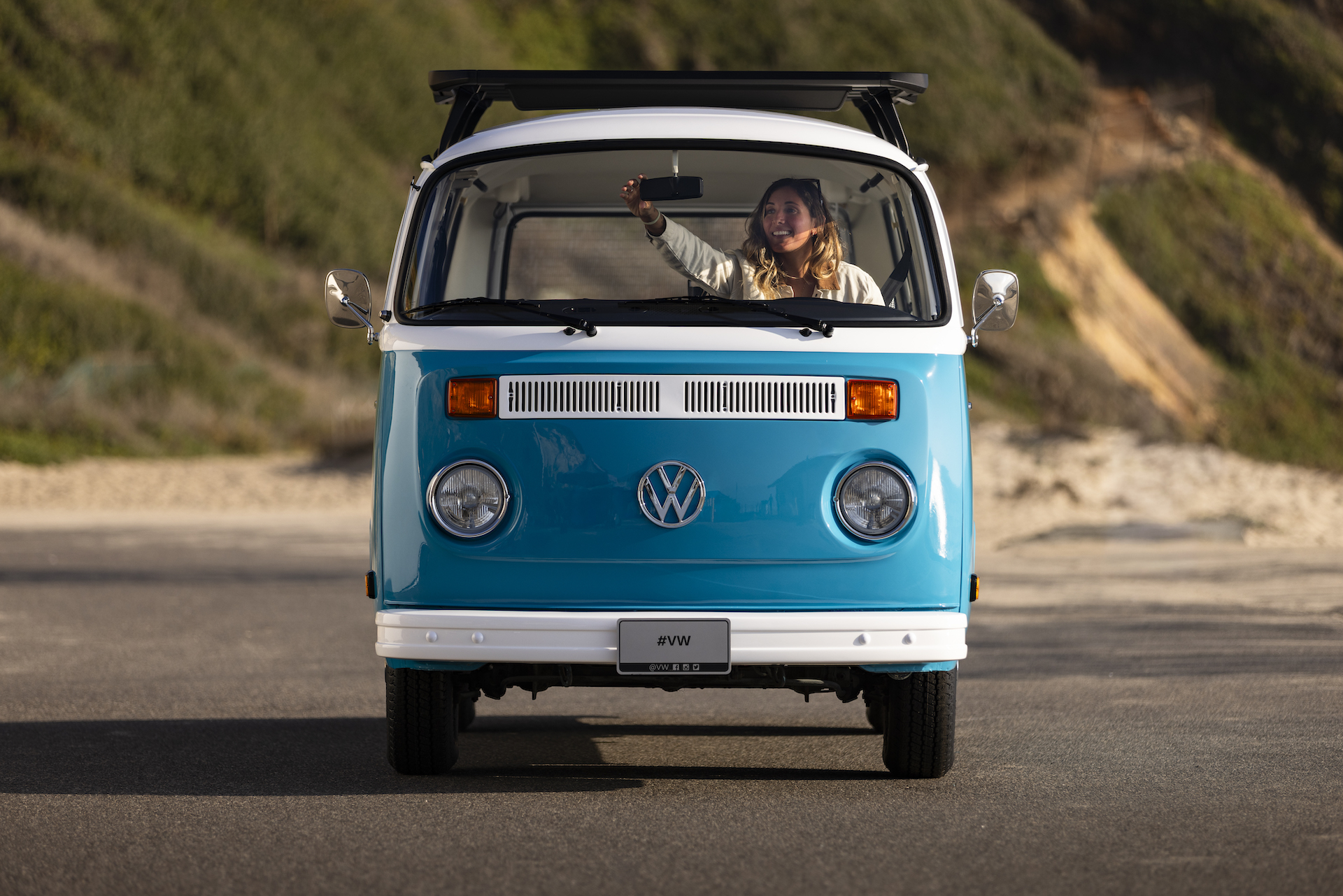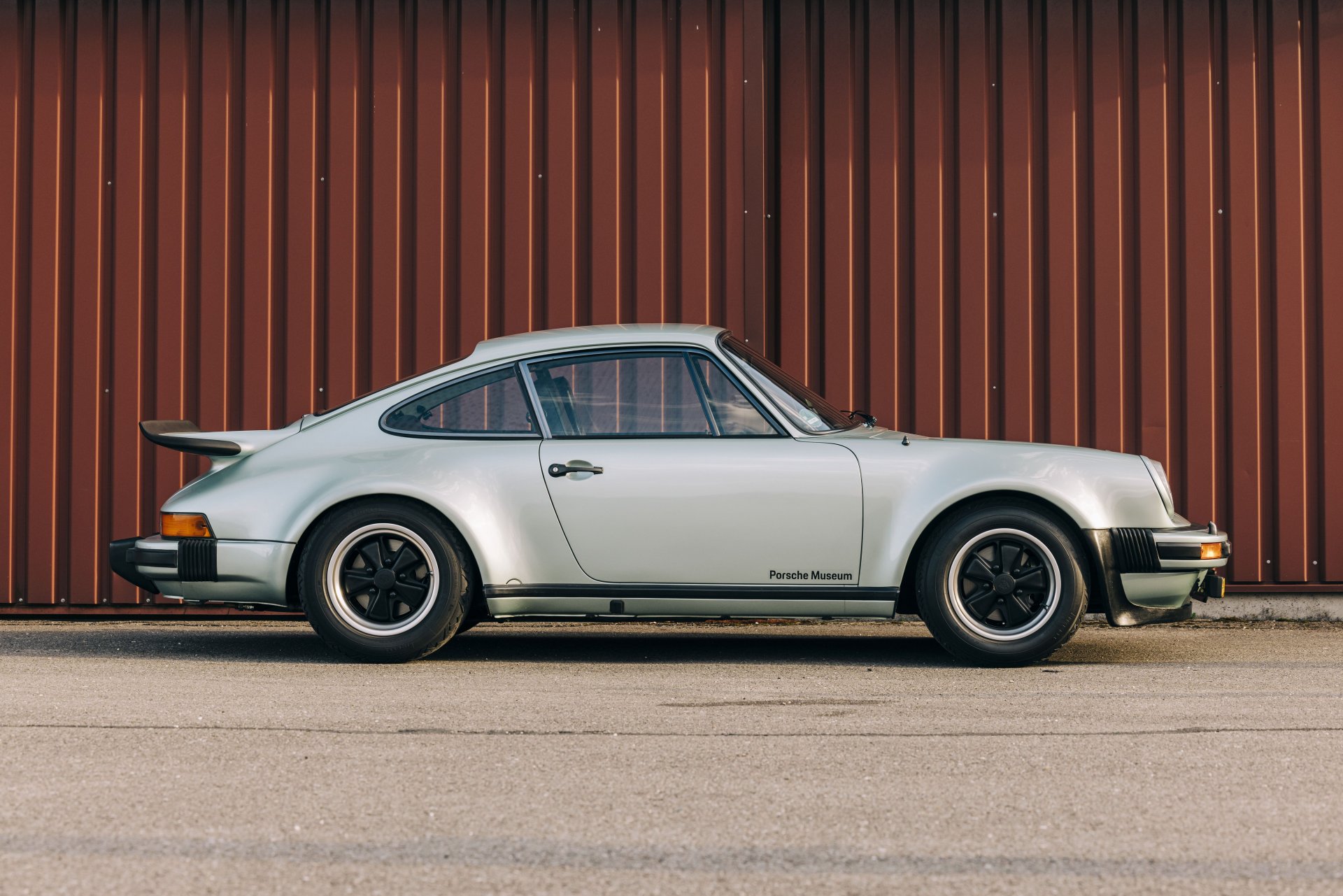How the Lamborghini Countach became the definitive supercar of the 1970s – and the decade after
Half a century ago, cars didn’t look like this. Suddenly, this one did. First previewed three years earlier as the LP 500 concept, the effect of the production Lamborghini Countach LP 400 driving onto the world stage in 1974 was like the Imperial Star Destroyer in the opening scene of Star Wars – a film, and franchise, still three years in the future.
Ferruccio Lamborghini was a farmer’s son who got wealthy building tractors and air-conditioning. In 1963, after being snubbed (as a customer) by Enzo Ferrari, he decided to produce his own luxury supercars.
Helped by former Ferrari talent like Giotto Bizzarrini and chassis man Giampaolo Dallara, in 1966 Lamborghini produced its first landmark in the transverse, mid-engined V12 Miura.
The Countach, which shared little other than its Bizzarrini-designed V12 engine with the Miura, would in turn become the definitive supercar of the following decade – and the one after.
Where Lamborghinis typically take the names of fighting bulls, “countach” in the Piedmontese dialect basically translates as “phwoarrr!”
The shape was by Bertone’s Marcello Gandini and was clearly sparked by his 1968 Alfa Romeo Carabo concept. As influential as the Countach wedge went on to be, it was aerodynamically awful and, in the engine-less LP 500 prototype, unworkable. Hence the three years of development during which the production version sprouted NACA ducts and box air intakes.
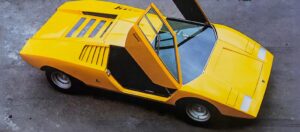
The LP 500 Lamborghini Countach Prototype – Image Lamborghini
The LP 400 had an aero Cd of 0.41, a figure later associated with the likes of the Volvo 740 and Land Rover Discovery 3.
The Countach was developed under Lamborghini chief engineer Paolo Stanzani and followed the Miura (and Ferrari) format of an aluminium body over a steel spaceframe, each requiring 110 metres of steel tubing. Giampaolo Dallara designed the front and rear suspensions, the latter featuring dual coil-over dampers, while working concurrently on BMW’s M1.
The Countach’s vast width of two metres had prompted Gandini to design the signature, upward swinging ‘scissor’ doors,’ as conventionally-opening doors would have left owners stranded in tight parking spaces.
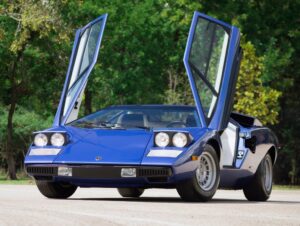
Marcello Gandini designed the signature upward swinging ‘scissor’ doors – Image Lamborghini
Still, cabin space was tight and right-hook countries endured horribly offset pedals. Only the lower half of the split side-windows could be opened, and then only partly. Rearward vision was virtually non-existent.
That’s because occupants were of secondary consideration. Forty-five per cent of the Countach’s 4.1-metre length and more than 80 per cent of its height were given over to the longitudinally mounted engine and five-speed gearbox.
Bizzarrini’s all-alloy, 60-degree quad-cam V12 was mounted “backwards”, with the gearbox at the front (literally between the seats), taking drive rearward via the sump. In LP 400 guise, it was fed by six 45 DCOE Webers, producing 280kW at 8000rpm and 365Nm at 5000rpm.
This brutal, beautiful V12 beauty would only bow out in 2010 with the Murcielago.
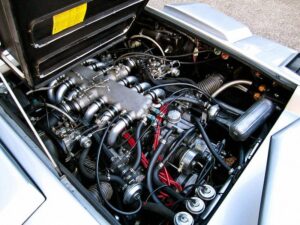
The 1982 – 1985 LP 500S Countach Engine Bay – Image Lamborghini
The Countach didn’t really need to be quick. But it was: zero to 100km/h in 5.6 seconds and a claimed top speed of 316km/h for the LP 400 was staggering stuff in ’74.
Later in the Countach’s evolution, the bored/stroked LP 500S of 1982 stretched the capacity to 4.8-litres for more torque. King Countach would be the 5.2-litre, 340kW Quattrovalvole, with 0-100km/h in 4.9 seconds – though its extra aero appendages knocked top speed down to 293km/h.
Ferruccio Lamborghini left his company before the Countach even made production. He sold 51 per cent of his shares in 1972 and the remainder a year or two later.
He had foreseen the decade well, with its economic downturn and oil crisis looming. The carmaker would limp through the 1970s and the ’80s, scraping through four ownership changes and a 1978 bankruptcy.

The LP 500S interior – Image Lamborghini
The Countach accordingly had a difficult life. While it sold more wall-posters than Farrah Fawcett, just 1,983 examples were built over a production run of 16 years. Build quality and reliability were usually no better than kit-car standards.
In a story that makes sense only in the context of Lamborghini, the final Countach was the 25th Anniversario, a strictly limited-edition 1988 model (with dubious body kit designed by then-employee, Horacio Pagani). But its replacement, the Diablo, ran two years late; the Anniversario, with 667 sold in those two years, became the biggest selling Countach variant.
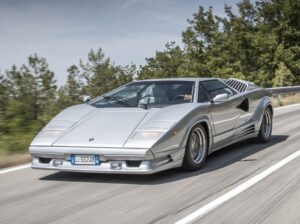
The end of an era came with the Lamborghini Countach 25th anniversary – Image Lamborghini

